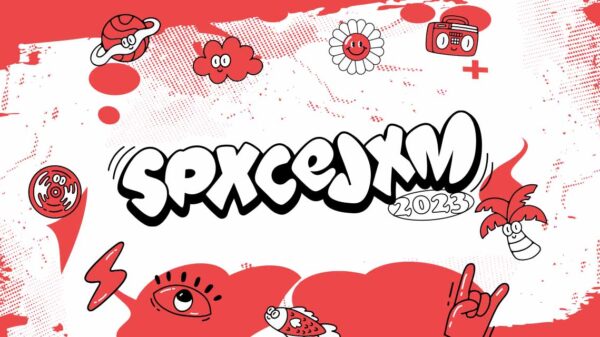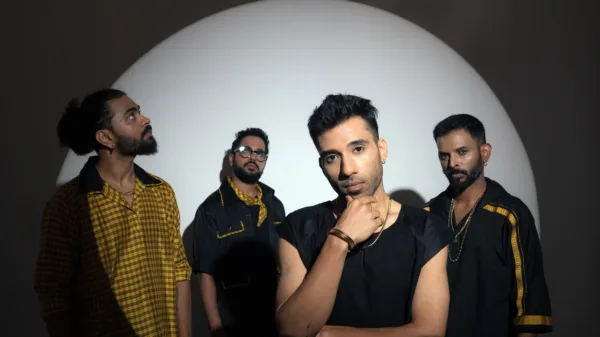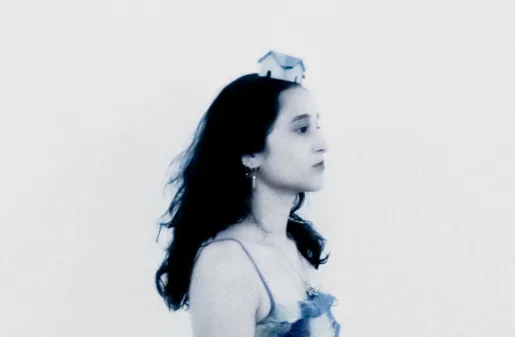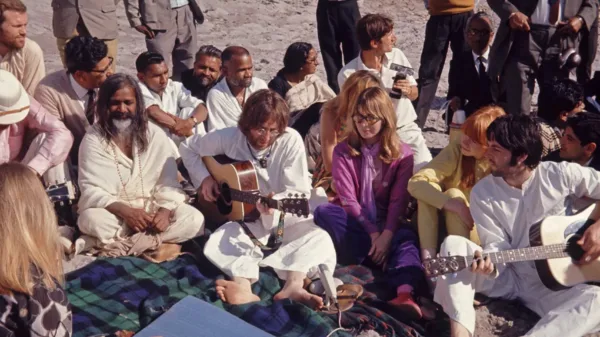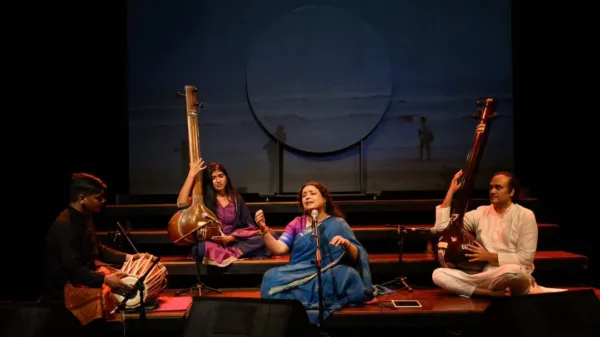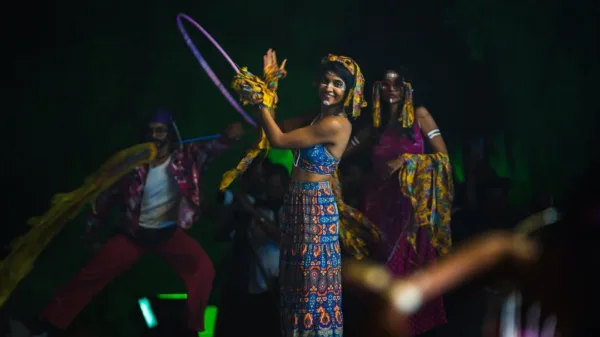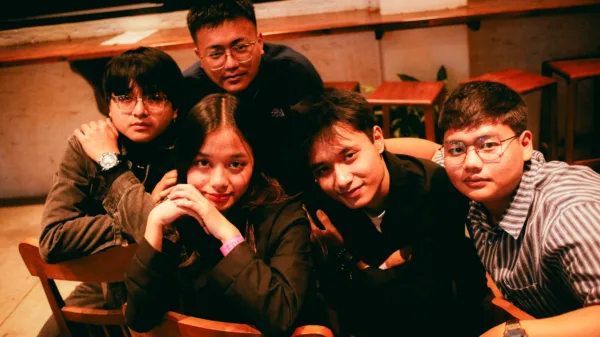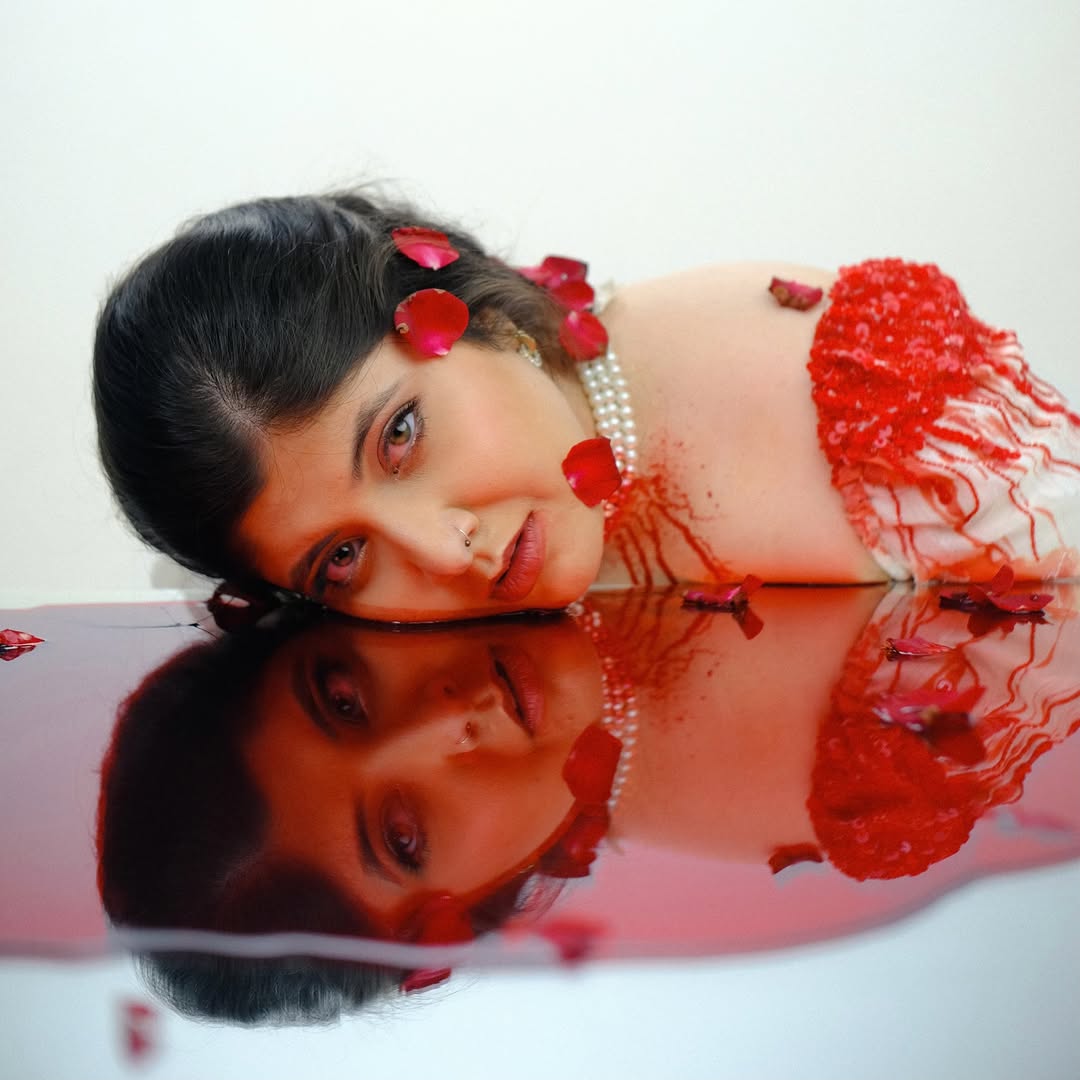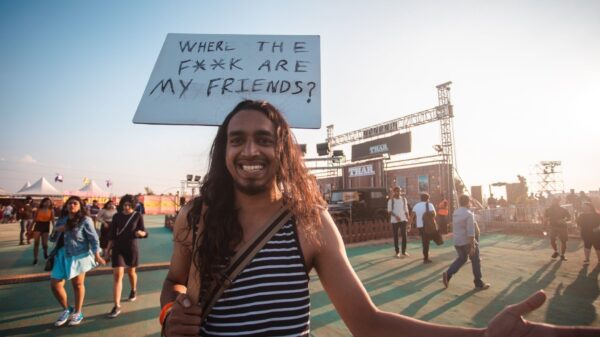It is always fun to encounter the chapter of an artist’s career where they decide to take that transformative leap that pushes them into a completely new arc of musicality. It is exciting – tracing back the bubbling undercurrents of all that has led up to the artist making the roundabout – and seeing the abandoning of personas previously held close.
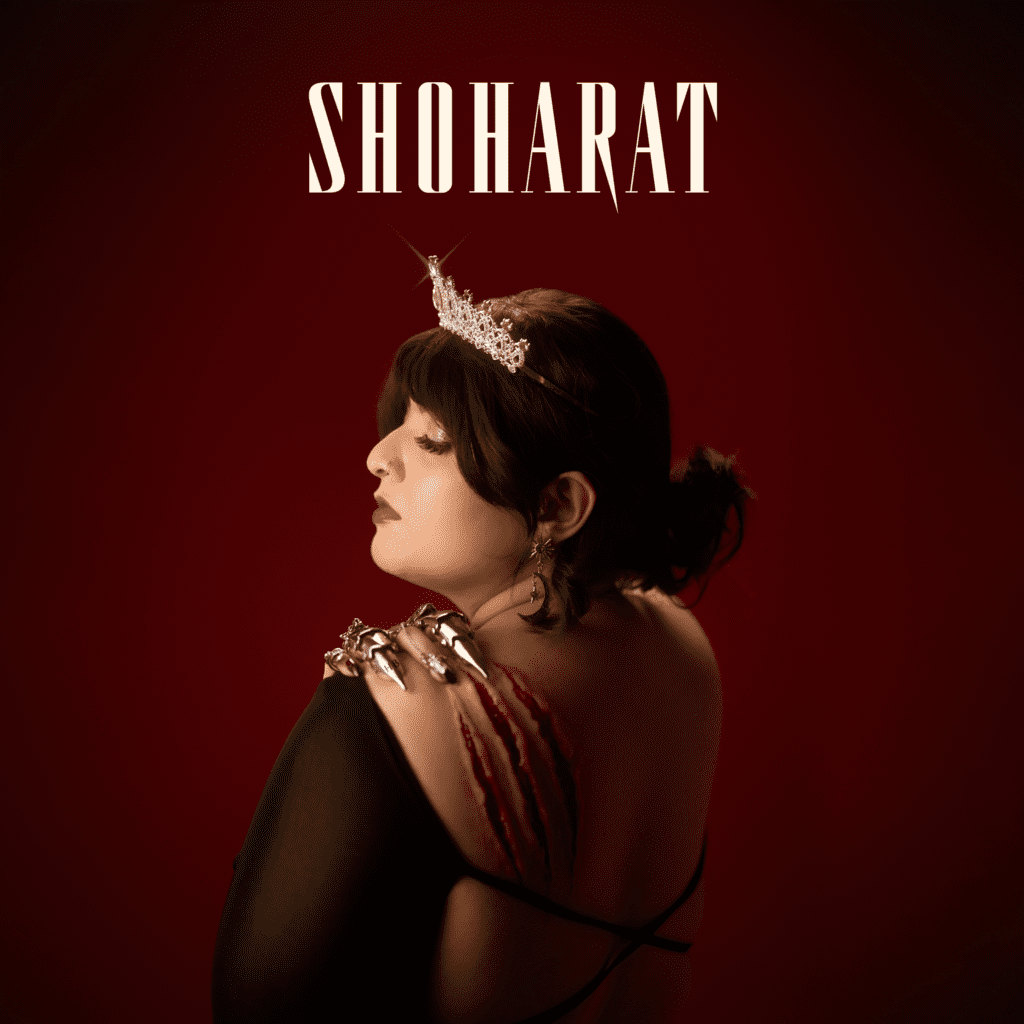
Hanita Bhambri’s debut album Shohrat’s artwork features her against a red backdrop, in a crown and silver talons, with scratch-gashes on her shoulder. There is a shift, obviously – the visual art attached to her previous numbers have always had that optimistic indie girl aesthetic imagery inextricably linked to it, matching the tone of what she has released so far. The artist is not leaving things out for guessing – a press release states, “Hanita Bhambri, previously known for her soulful indie-pop sound, is poised to transform her artistry with the release of her groundbreaking ‘dark pop’ debut album, “Shoharat”. This isn’t just an album; it’s a raw and unflinching exploration of Hanita’s journey through the music industry, a powerful testament to her resilience and artistic vision. “Shoharat isn’t just music to me – it’s a map of my emotional survival. A trail of broken glass from innocence to fire,”” declares Hanita. “”It’s for anyone who’s ever been overlooked, used, underestimated, made to feel small – and decided to rise anyway. It’s not polished. It’s messy. It’s real. It hops between sounds and genres. It’s every version of me that emerged from pain: the forgiver, the survivor, the girl who cried on the bathroom floor, the woman who learned to roar.”” This album, meticulously crafted as a series of interconnected stories, serves as a “”confession booth”” where Hanita “”finally stopped being polite.”
Bhambri takes the “dark pop” tag seriously, because all the tracks on this album are invariably meandering around all things visceral. It opens with Zeher, which comes with a music video where Bhambri goes from blood soaked and devastated, to menacing and tortured. The lyrics are in a similar vein – “Kisi ko badal pana hi asambhav hai / Pyaar jitna bhi ho dil mein nafratein buland hain / Jhagde bathere kar liye / Kya haasil kiye / Zeher ke ghoont bhi pee liye / Kya haasil kiye”. The artist is almost trying to reconcile herself with the idea of no change being possible, and it is accompanied by production that is electropop. What Bhambri has going for herself is optimal control of her voice, where over the breaks of distorted vocal quirks, she lets herself use it in more soaring, unrestricted ways that her listeners might not have been familiar with previously with the indie-pop sonicity limiting her.
Zillat, the second track on the album, is positively one of the most interesting tracks on it. Combining some grungy vocal techniques and some 2010s angry Bolly-pop production, it establishes the character that Bhambri starts out with in the album. She follows this up with Daayan, whose music video has the singer-songwriter framing herself to be as ominous as possible, as she sings “Tere sapno mein roz aaun/Banke daayan/Teri rooh ko kapkapaun/Banke daayan”.
Something that becomes very apparent is Bhambri takes a lot of cues from visuality – because not only is it present in her lyricism and her videos, it is also that you could picture her music in Bollywood’s neo-noirs and place them in the context of their respective albums and it would fit. The title track Shohrat, also falls in this space of sound. She describes it as a track that “confronts the inherent pain in the pursuit of fame head-on, highlighting how artists are built up only to be discarded, yet finding a defiant power in being underestimated.”
The most unprecedented track in this album, and Bhambri’s discography, however, is possibly BHEDIYA, where she does a rap-recitation confluence of sorts, with vocals that tie the whole thing up together, and it adds the edge that she has been looking to add in the whole album more than the other tracks.
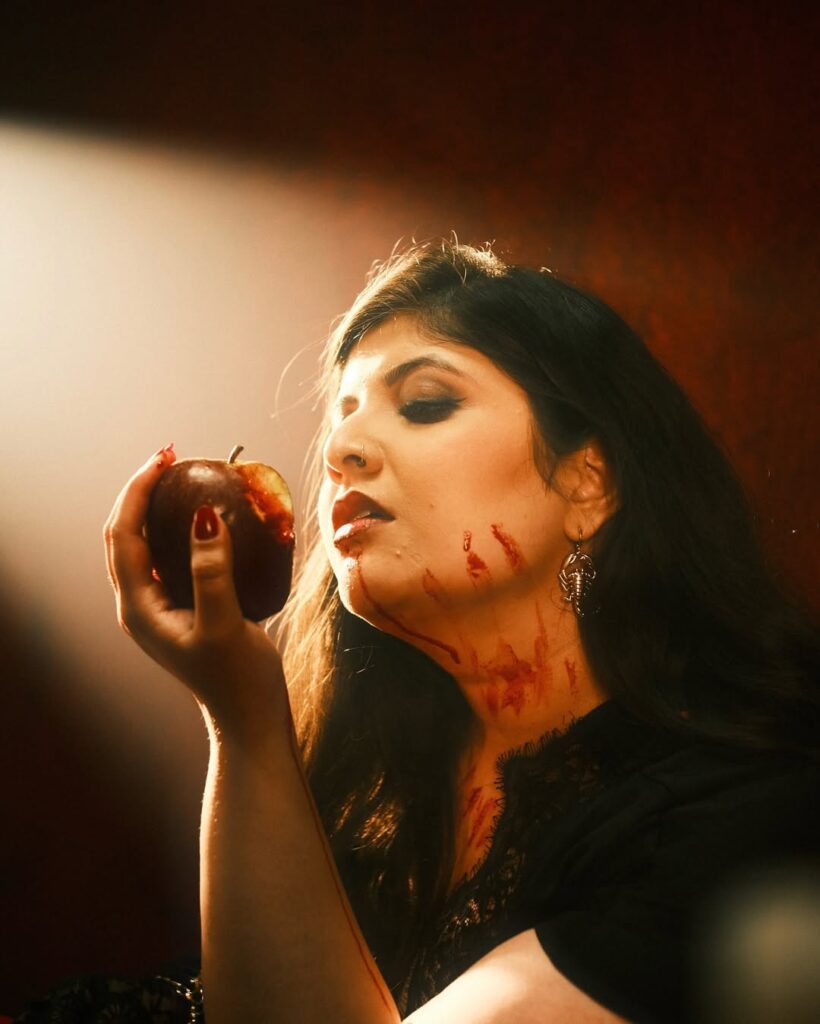
One of my favorite tracks on this album is the closing number, Shehzadi, where you can hear Bhambri using the “innocent” tonality that she has gathered fame for quite some time and combining it with the soaring nature of vocals that she has allowed herself to have on this album. This combined with the zitaar makes it an almost happy surprise, and also lets herself play with all the identities she has been constructing and dismantling. Somehow, it also reminds me of Bhambri’s contemporary in Hindustani classical fusion, Bawari Basanti, who has usages of similar tools and textures, albeit more leaning towards the classical than the pop.
For the most part, Shohrat sounds like a catharsis in soundform, where the artist does not let her self shy away from dealing with everything that gnaws and eats away at her. It is a coming of age, of sorts, as apparent. Bhambri combines elements of pop, grunge, some rock and rap here and there, and there is a firm coherent vision which helps you place her.
My only complaint, perhaps, is with this album’s production. For a project that is so unfiltered, and actually delves into multiple complexes in the artist’s psyche, it is surprisingly clean. Bhambri walks the edge of all things “raw” and he borrows from profiles of music that would complement her project, and she succeeds, but it does not make sense that the project has production that polished when it is so rooted in reconstruction. This is the only trap she falls into, where the synths and clean drumlines are prioritized more than more radical sounds that would work with her project. The lyrics are primal, and Bhambri has one of the most powerful vocal ranges among her contemporaries – and yet, there is this tight grip of control around the way she has constructed this project that is supposed to release her. A little more leaning towards R&B, or perhaps some rock, for achieving the noir-esque sound and the anger would sharpen the record further.
It would be fun to see Bhambri experiment further with sound, and dismantle the concept of “finesse” which might be the only thing holding her back from achieving the potential her and her music projects have.




